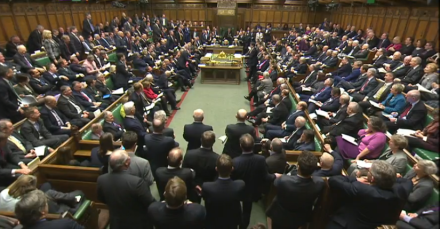
What is the 2018 boundary review and why is it happening?
The Conservative Government voted to decrease the number of MPs in parliament from 650 to 600. New laws require “every new constituency (except four specified island constituencies) must have roughly the same number of electors: no fewer than 71,031 and no more than 78,507.”
In order to deliver this, there are independent reviews of parliamentary constituencies. These reviews are being conducted by each home nation’s boundary commission. Consultations have opened into the shape of the the new boundaries. This is the beginning of a long process, with various reviews publishing their final reports in 2018, and will then be subject to a parliamentary vote.
Is the Boundary Review unfair?
Reducing the number of MPs to 600 was a Tory manifesto commitment. It has also been some time since a review of parliamentary boundaries was completed. However, there are some real issues with the current review, which is based on the number of registered voters rather than the number of people who live in each area. This disproportionately effects traditional Labour areas. Many people left off the electoral register are on lower incomes, young or living in the private rented sector. The Boundary Commission is also being forced to use an older version of the electoral register, which does not include almost two million people who registered to vote in June’s EU referendum. It is also arguably undemocratic to reduce the number of elected MPs in the House of Commons while continuing to increase unelected peers in the House of Lords.
How is the Labour Party responding to the changes?
In terms of responding to the current consultation, in some areas we will support the commissions’ recommendations, in other places we will be submit alternative plans. Other political parties will make their own submissions. Labour is coordinating its response via the various regional parties and the NEC boundary review steering group, of which I am a member. Sitting MPs and CLP representatives will be consulted as part of the process for agreeing a final position to be signed off by the NEC. Once agreed, all parts of the party are expected to support the national position.
What is the rationale behind Labour’s submissions?
The new parliamentary boundaries will exist for many years. Labour’s strategy is to create as many winnable seats as possible. This means that rather than create “super safe” Labour seats, we want lots of marginal seats where we can competitively challenge in order to give us the best chance of winning a parliamentary majority and forming a government.
How will we select MPs for the new boundaries?
The NEC has agreed the process for selecting MPs affected by boundary changes. This has been communicated to MPs. To summarise, and possibly over-simplify, MPs who have a 40 per cent territorial stake in a new seat can apply for selection in the initial phase. This first phase will be followed by other opportunities for MPs to contest subsequent selections. Selections will be voted on via one member one vote postal ballots.
What about selecting new prospective parliamentary candidates?
The NEC has not decided on the rules or timetable for selecting new PPCs. We have talked about beginning the selection process after the new boundaries have been redrawn. Feedback from our 2015 candidates in the Beckett Report suggested that there was no real electoral benefit to very early selections.
What about diversity?
The boundary commissions can’t consider diversity of representation as a factor in their reviews, but the Labour Party is committed to electing a PLP that reflects the diversity of the communities they represent. The NEC equalities committee and the organisational committee will consider how best this can be achieved. If necessary, a higher proportion of selections for PPCs may use all-women shortlists. The Scottish executive committee will oversee parliamentary selections in Scotland and have indicated that they want around 50 per cent of candidates to be female.
Will this really happen?
The Coalition covernment failed to redraw the parliamentary boundaries and there is always the change Tory rebels could scupper the current process. The Conservatives’ new agreement with the DUP makes a rebellion less likely. Overall the Conservatives have currently much more to gain than lose from the new boundaries. It is also possible for them to manage lost Tory seats through retirements and possibly also elevating people to the Lords. It is very likely that this really will happen.
What if there is a snap election in 2017?
If the Government calls a general election before the boundary review is completed and voted on by parliament then the election will be conducted under our existing boundaries.
Questions
If you have questions about the boundary review you can contact your CLP or regional office. Members can contact Ann Black, the CLP rep on the NEC steering group. Councillors and others in local government are welcome to get in touch with me.
Alice Perry represents local government on Labour’s NEC.




More from LabourList
Prime Minister issues statement on Venezuela
Former Labour MP Sir Patrick Duffy dies at 105
‘Forget New Year – for Labour, discipline done well has to be their year-long resolution’